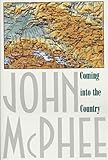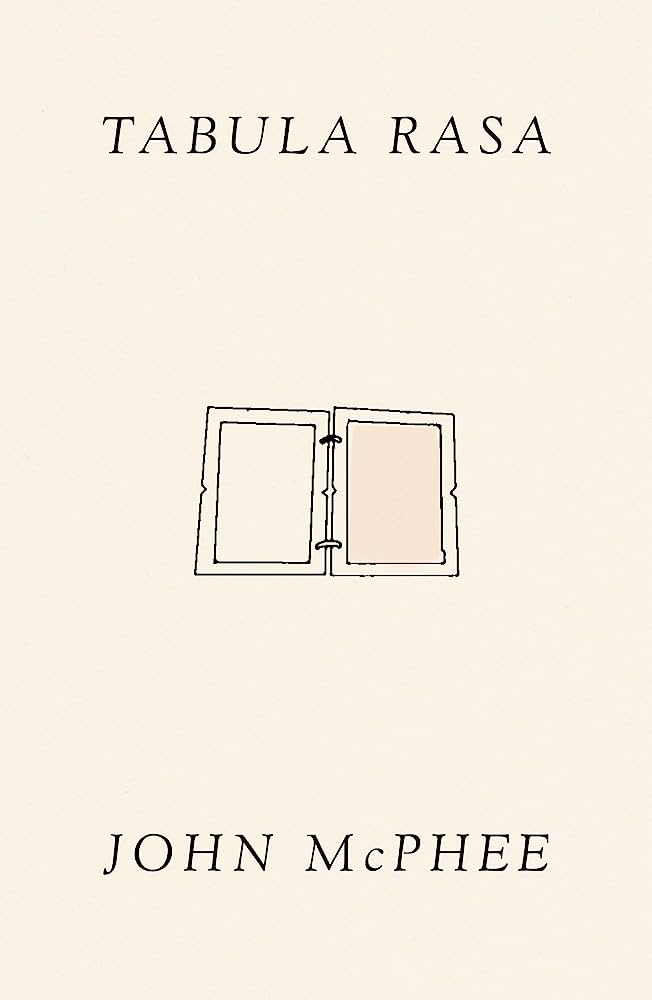In November 2010, a century after Mark Twain died of a heart attack at age 74, the University of California Press published the first volume of his unexpurgated autobiography. To the surprise of everyone but Twain himself—he had insisted on the 100-year cooling-off period so he could “speak thence freely”—hundreds of thousands of readers were waiting. Clocking in at nearly 800 pages of dictated reminiscences and scholarly addenda, Autobiography of Mark Twain, Vol. 1 blew past its planned initial print run of 7,500 copies and kept on going until more than a quarter million doorstoppers were out the door. Still, booksellers struggled to keep it in stock for the holidays. “It’s totally the dad book of the year,” one of them informed The New York Times.
John McPhee has four daughters—all of them professors, he likes to note—though it’s unclear if they gifted him 2010’s most unexpected bestseller. What is clear is that Twain’s garrulous autobiography—two more volumes followed in 2013 and 2015, for a total of 735,000 words, most of them dictated to a stenographer as Twain sat propped up in bed—is the inspiration for Tabula Rasa, Vol. 1, McPhee’s 34th book of finely wrought “factual writing.” (He prefers the term to nonfiction, of which he once told the Paris Review: “What the hell, that just says, this is a nongrapefruit we’re having this morning. It doesn’t mean anything.”)
On the phone from his home in Princeton, N.J., on an unseasonably warm day in April, McPhee stresses that Tabula Rasa, which gathers the 92-year-old New Yorker writer’s reflections on projects he once contemplated but never wrote, is not an autobiography. It was, however, done according to Twain’s instructions for “how someone ought to do an autobiography—in a totally random miscellaneous way.” McPhee continues, “Twain’s point is just to jump in anywhere, anywhere at all, and start talking. And if something distracts you, if it seems more interesting, leave the first thing, and go to the second or the third. You can always go back to the first thing next week.”
 Legions of McPhee fans will need a moment to pick themselves up off the floor. Anyone who’s cracked the spine of 2017’s Draft No. 4, an immersive blend of writerly advice and career retrospective that sets down lessons McPhee has been teaching at Princeton University since the 1970s, will recall the intricate diagrams of his New Yorker essays, and the arduous process by which he arrived at their elegant structures. In the 1960s and ’70s, it involved typing out every scrap of information he’d gathered over months or years spent researching a subject, coding those notes according to category, and cutting a photocopied version of them into “slivers of varying size.” In 1984, an employee of Princeton’s Office of Information Technology wrote a program that allowed McPhee to do essentially the same thing on his computer.
Legions of McPhee fans will need a moment to pick themselves up off the floor. Anyone who’s cracked the spine of 2017’s Draft No. 4, an immersive blend of writerly advice and career retrospective that sets down lessons McPhee has been teaching at Princeton University since the 1970s, will recall the intricate diagrams of his New Yorker essays, and the arduous process by which he arrived at their elegant structures. In the 1960s and ’70s, it involved typing out every scrap of information he’d gathered over months or years spent researching a subject, coding those notes according to category, and cutting a photocopied version of them into “slivers of varying size.” In 1984, an employee of Princeton’s Office of Information Technology wrote a program that allowed McPhee to do essentially the same thing on his computer.
So, “totally random” can’t be right. Can it? Yes, it can. In Draft No. 4, McPhee writes that structures “should not be imposed upon the material. They should arise from within it.” On the phone from Princeton, he says of Tabula Rasa, “It would be a mistake to try to impose some kind of rule over where all these pieces work, such as chronology. You know: 1964, 1965. I mean, how tedious. Or things that were agricultural or they were sports. Nonsense.”


 Instead of imposing artificial groupings, McPhee says he looked for “interesting juxtapositions,” or places where he could fit pieces together “like two white Scottie dogs that repel each other on a magnet.” (So, not totally random after all.) The opener delves, without preamble, into a 1967 road trip the McPhee family took across Extremadura, a rugged “autonomous community” in western Spain. Twenty pages and seven vignettes later, McPhee returns to Extremadura, recounting both a graduate school summer when he wanted to get there but didn’t, and a 2010 family trip when he did. Though he’s thought about the region as a subject for a New Yorkerpiece since 1967, Extremadura won’t join the ranks of Alaska (Coming into the Country), Wyoming (Rising from the Plains), and New Jersey’s Pine Barrens (The Pine Barrens).
Instead of imposing artificial groupings, McPhee says he looked for “interesting juxtapositions,” or places where he could fit pieces together “like two white Scottie dogs that repel each other on a magnet.” (So, not totally random after all.) The opener delves, without preamble, into a 1967 road trip the McPhee family took across Extremadura, a rugged “autonomous community” in western Spain. Twenty pages and seven vignettes later, McPhee returns to Extremadura, recounting both a graduate school summer when he wanted to get there but didn’t, and a 2010 family trip when he did. Though he’s thought about the region as a subject for a New Yorkerpiece since 1967, Extremadura won’t join the ranks of Alaska (Coming into the Country), Wyoming (Rising from the Plains), and New Jersey’s Pine Barrens (The Pine Barrens).
Asked why he thinks some ideas developed into books and essays but others didn’t, McPhee has a straightforward answer (as he does for most things): “I think in most cases it’s because it takes 200 times as long to write one New Yorker piece as to have go by you 400 ideas.” Elsewhere, he’s said, “There are zillions of ideas out there—they stream by like neutrons. What makes somebody pluck forth one thing—a thing you’re going to be spending as much as three years with? If I went down a list of all the pieces I ever had in The New Yorker, upward of 90% would relate to things I did when I was a kid.”

There are plenty of those in Tabula Rasa, including recollections of an air-spotter training course 10-year-old McPhee took on Princeton’s campus during WWII and of a teenage job he had drowning fruit flies in the basement of Guyot Hall—on the fifth floor of which he would later have his own office. McPhee, whose father was the medical doctor for Princeton’s football, basketball, and baseball teams, has used the image of a drawing compass’s fixed foot to describe his relationship to his hometown. “I live three or four miles from the hospital I was born in,” he says. “I went to high school here. I went to college here. My work, though, has sent me around the world. I’ve gone off to this place and that and am always coming back here. I hope to some extent that defeats the provincialism my life story suggests.”

Would it be provincial to write about Province Line Road, the 17th-century boundary between East and West Jersey that passes behind McPhee’s house? He never got around to it. Nor did he ski down the untracked runs of such favorite subjects as fishing (he caught the American shad in The Founding Fish, but sunfish, walleyes, suckers, and 15 other species slipped through his net); rivers (a freighter trip from San Francisco to Sacramento got scuttled by C-suite stick-in-the-muds); fruit (the follow-up to Oranges might have been Bing Cherries, if not for a quarrelsome pair of married orchard keepers); and basketball (whence all the time-outs?).
 Basketball—specifically, how it was played by Princeton star Bill Bradley—was the subject of McPhee’s first New Yorker profile, in 1965. To his surprise, Farrar, Straus and Giroux expressed interest in the piece as a book, and released A Sense of Where You Are the following year. The company has published each of McPhee’s books since (all of them originating in the pages of the New Yorker), a consistency that McPhee attributes in no small part to his friendship with cofounder Roger Straus. “I never thought of ever being published by anybody else,” he says. “I once asked him how much money I was losing because he was my publisher. He said, ‘Oh, not a whole hell of a lot.’ ”
Basketball—specifically, how it was played by Princeton star Bill Bradley—was the subject of McPhee’s first New Yorker profile, in 1965. To his surprise, Farrar, Straus and Giroux expressed interest in the piece as a book, and released A Sense of Where You Are the following year. The company has published each of McPhee’s books since (all of them originating in the pages of the New Yorker), a consistency that McPhee attributes in no small part to his friendship with cofounder Roger Straus. “I never thought of ever being published by anybody else,” he says. “I once asked him how much money I was losing because he was my publisher. He said, ‘Oh, not a whole hell of a lot.’ ”
Early in Tabula Rasa, McPhee describes the book as a project “meant to keep the old writer alive by never coming to an end.” Volume two is already in the works. Among other projects unwritten by McPhee, it contemplates the relationship between medicine and literature (think Chekhov, Dostoyevsky, many of McPhee’s former students who went on to become doctors).
“Basically, it comes down to where the stories are,” McPhee says, giving away the ending. Don’t worry, there’s plenty more where that came from, as he intends to keep casting his line into the ceaseless stream of ideas. After all, he writes in volume one, “if Mark Twain had stayed with it, he would be alive today.”
This profile was produced in partnership with Publishers Weekly.











